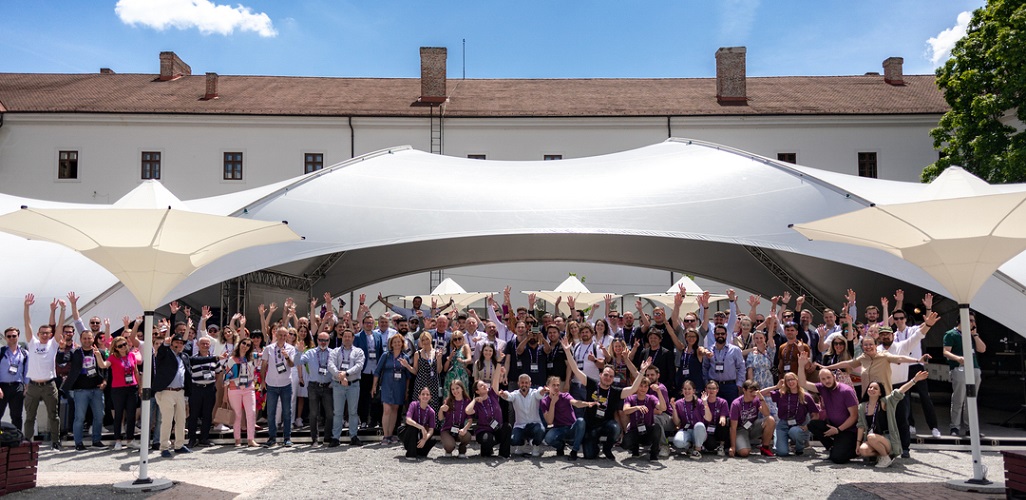
Happening shortly after the European Commission introduced four regulatory packages (Open Finance Initiative, the PSD3 proposal, the green finance proposal, and the digital Euro), Unchain Fintech Festival was the perfect place to engage quality content with the latest updates that will guide the financial landscape in the future.

Key takeaways
The event agenda was packed with talks which set out to address the industry` most dire challenges: fintech regulation, banking disruption, the transformation of payments, the B2B & B2C FinTech and much more.
1/ BANKING INTO THE DIGITAL AGE
A prevalent viewpoint centered around digitalization, with certain banks expressing their ability to enhance digitalization. Some concerns were raised about potentially alienating individuals who have yet to fully embrace digital banking. Consequently, these banks are somehow slowing down the pace of digitalization to cater to all audiences, including those who have not fully transitioned to digital platforms. Similar sentiments were shared regarding CBDCs, with questions raised about the timeline for their implementation. Some central banks acknowledged the need for education and widespread adoption to achieve the desired outcomes.
Nevertheless, banks have undergone a significant transformation, shifting their focus towards prioritizing user experience and leveraging technology. This shift has propelled them to adopt a more akin approach to technology companies, continuously developing advanced solutions to enhance client satisfaction. In this process, banks have faced the challenge of effectively managing the delicate balance between compliance requirements and ensuring a seamless digital customer journey.
2/ CEE PAYMENTS LANDSCAPE
The collaboration between incumbent companies and the new players in the ecosystem paves the way for how the future of payments will look like. It is clear that a new trend emerged indicating the rapid acceleration of mobile banking. Although people still rely on traditional payment methods such as plastic cards, there is an increasing shift towards mobile devices and wearable technology. Contactless payments have already become the norm, and the transition from cards to mobile devices is expected to occur swiftly. Additionally, the desire for instant gratification among consumers is driving the demand for instant payments and refunds.
Regarding blockchain technology, there is now a broader range of applications being explored. Although blockchain has often been associated with cryptocurrencies, its potential extends beyond that. One notable use case is cross-border payments between companies, particularly in the context of the booming e-commerce industry. The convergence of face-to-face and online commerce has already been observed, but there are still numerous untapped use cases yet to emerge.
3/ AI & THE NEW TECH STACK FOR BANKING
2023 is the year of AI but how can it be used in financial analysis and decision-making? AI-powered algorithms and predictive models are increasingly being used to analyze large volumes of financial data and make more accurate and informed investment decisions. AI can also be used to automate and streamline routine tasks such as risk assessment, fraud detection, and compliance monitoring.
Banks need to move to the cloud, to take advantage of technology and line up the process of customer service via call center, where customer needs can be verified at once during a call, and be addressed instantly. Banks to drive innovation on the market and be the first to win the game.

THE OSCARS OF FINTECH
The recognition for the Digital Bank of the Year in CEE went to Tatra Banka from Slovakia, for their exceptional commitment and ongoing activity in supporting digitalization and providing convenient digital banking experiences. Specifically, for having the highest penetration of mobile payments in F2F transactions in CEE and for taking the initiative to distribute NFTs to their staff.
Moreover, the untapped potential of CEE fintech was showcased at the Unchain Startups Tournament, where teams have shown considerable progress, demonstrating maturity, client experience, revenue generation, and extensive business expertise. Judges greatly appreciated these attributes, selecting as winner of the competition Synapze Gmb, an end to end automation platform for the financial services industry which makes decision-making efficient with the power of AI.
____________
Hosted in the middle of the year, Unchain Festival aims to understand the financial industry dynamics as they are in the present moment and generate a conversation basis for future development. This year brought a greater number of professionals, an expanded market representation.
More than 450 high-profile finance professionals gathered in a two-day business marathon, packed with fintech panels, business networking, startup pitches, parties and much more. Delegates from 30 countries, 15 regulators & central bankers, 180+ commercial bankers & financial institutions representatives, 180+ fintechs and technology providers, 90+ ecosystem players, academia & media met last week in Oradea, Romania, in the heart of Central Eastern Europe, to celebrate a fintech summer of innovation.
Banking 4.0 – „how was the experience for you”
„To be honest I think that Sinaia, your conference, is much better then Davos.”
Many more interesting quotes in the video below: